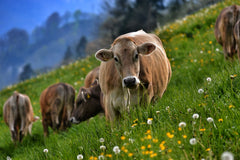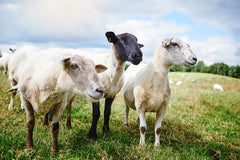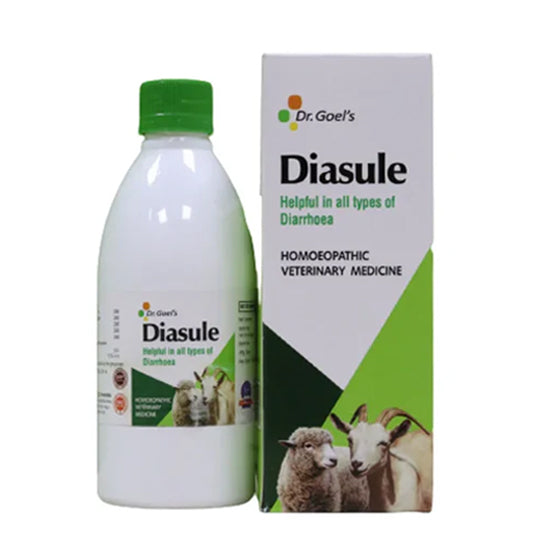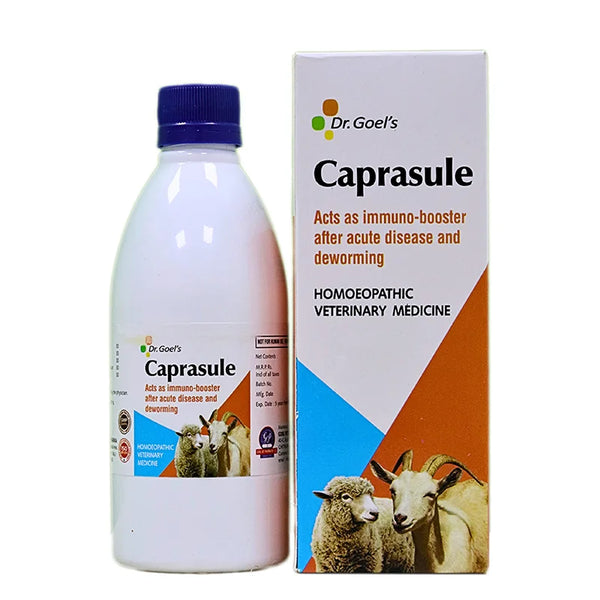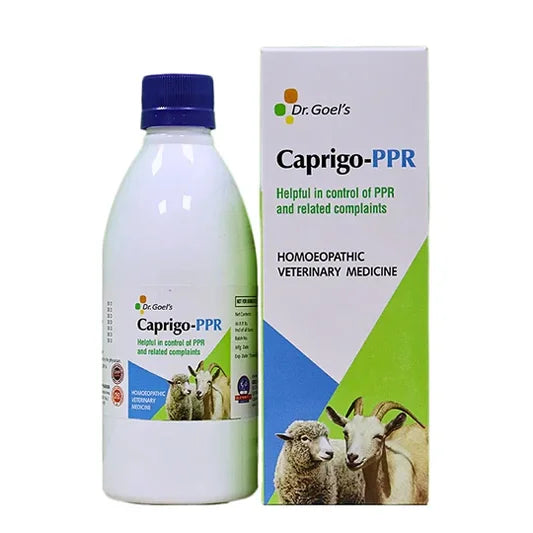
Indian Goat Breeds With Their Peculiar Characteristics
Goat farming is an important and one of the oldest livestock-rearing practices in India. Goat farming is quite lucrative in nature as a business with less investment and considerably more returns. It is an extremely important source of income and livelihood for many farmers in our country. Goats are generally reared for their meat, milk, and manure. This business has recently gained popularity amongst small and marginal farmers owing to it’s low investment costs, high profitability and considerably low maintenance requirements. India happens to be one of the leading producers of goat meat in the world with a production of around roughly 4 million tonnes per year. According to the National Sample Survey Office (NSSO), the consumption of goat meat in India has been growing at an annual rate of 6%.
Due to an ever-increasing demand for goat meat, the growth of commercial goat farms in India has been on the rise. These farms are usually set up in peri-urban areas and are run by businessmen or entrepreneurs who invest in modern farming practices such as artificial insemination, automated feeding machines and so on. Commercial goat farming is becoming a viable option for small farmers who are looking to increase their income.
Another trend in goat farming in India is the adoption of improved goat breeds. The Indian Council of Agricultural Research (ICAR) has developed several improved breeds of goats like the Jamunapari, Beetal, and Osmanabadi. These breeds have higher milk and meat yield, are resistant to diseases, and have better adaptability to the Indian climate. These breeds are being popularized among farmers through government programs and private initiatives.Many startups and companies are also developing various innovative solutions for the goat farming industry like monitoring systems, digital marketplaces for goat products, and online training programs for farmers.
The government has also taken several initiatives to promote goat farming in India. The National Livestock Mission (NLM) provides financial assistance to farmers for setting up goat farms, and the Rashtriya Krishi Vikas Yojana (RKVY) provides subsidies for breed improvement and disease control. The government is also providing training and extension services to farmers through various schemes due to which goat farming is an expanding business currently in our country.
In today’s blog let us learn about some of the major Indian goat breeds and their peculiar characteristics.
1. Jamunapari:

- Location- As the name suggests, this Indian breed of goat is found on the other side of the Yamuna River. Basically, this breed of goat is native to the state of Uttar Pradesh.
- Coat – Usually white in color with black or tan markings on the neck and ears.
- Size- Large and tall. Jamunapari is the tallest goat breed with typically long legs.
- Weight- Average weight 60 kgs, with males weighing around 65 kgs -80 kgs and females weighing around 45 kgs to 60 kgs.
- Typical characteristics – Large pendulous ears and convex face line.
- Milking characteristics – Daily milk yield is roughly around 2 to 2.5 kg per day.
2. Eetal:

-
 Location – This breed is native to the state of Punjab
Location – This breed is native to the state of Punjab - Coat – Predominantly black, tan, or shades of red.
- Size – Medium to large sized, typically smaller than Jamunapari goat breed.
- Weight – An adult male weigh roughly 50kgs -60 kgs whereas an adult female weighs around 45kgs -50kgs.
- Typical features – The Beetal goat has long, pendulous ears that hang down close to the face.
- Milking Characteristics – Average milk yield is around 1kg to 2kgs of milk per day.
3. Barbari:

-
 Location – Native to Delhi, Gurgaon, Karnal, Panipat and Rohtak in Haryana state and Uttar Pradesh.
Location – Native to Delhi, Gurgaon, Karnal, Panipat and Rohtak in Haryana state and Uttar Pradesh. - Coat – Mostly white and black tinge mixed coat.
- Size – Medium-sized breed of goat.
- Weight – An adult male weigh roughly 50kgs -60 kgs whereas an adult female weighs around 45kgs -50kgs.
- Typical features – They are extremely prolific and give birth twice in 12-15 months.
- Milking Characteristics – Produce around 1kg to 1.5 kg of milk per day.
4. Tellicherry:

-
 Location – native to the state of Kerala.
Location – native to the state of Kerala. - Coat – Mostly white in colour
- Weight – Average weight is around 30kgs -50 kgs..
- Milking Characteristics – Mostly reared for meat purposes, milk production is on the lower end is around 1kgs to 1.5kgs of milk can be produced in a day.
5. Osmanabadi:

-
 Location – This breed is native to the Osmanabad region.
Location – This breed is native to the Osmanabad region. - Coat – Black-coated, brown-coated goats are found within this breed.
- Size – Medium-sized breed of goat.
- Typical features – Osmanabadi goats are also known for their high reproductive rate and twinning percentage, which means that they often give birth to twins.
- Milking Characteristics – Osmanabadi breed of goat has a good milk-producing capacity and can yield up to 3.5 kg a day.
6. Malabari:

-
 Location – This breed is native to North Kerala
Location – This breed is native to North Kerala - Coat – Coat colour ranges from white to complete black, black and brown, and white with coloured patches occur.
- Weight – An average male goat weighs around 40 kgs, whereas an average female Malabari goat weighs roughly around 30 kgs.
- Typical features – The quality of the skin is good.
- Milking Characteristics – The average milk yield is roughly around 0.9-2.8 kg of milk a day.
7. Changthangi:

-
 Location – This breed is native to the high-altitude regions of Ladakh in India.
Location – This breed is native to the high-altitude regions of Ladakh in India. - Coat – White and rest brown, grey and black. Undercoat is usually white or grey
- Size – Small-sized goat breed.
- Weight – Average weight is around 20 kgs.
- Typical features – Yields warm delicate fiber, pashmina. Pashmina fibre is very expensive as it is being used for the production of world’s finest shawls.
Both male and female Changthangi goats are bearded and have short cylindrical horns which are directed upwards and outwards.
8. Surti:

-
 Location – This breed of goat has its origin in the Saurashtra region of Gujarat,
Location – This breed of goat has its origin in the Saurashtra region of Gujarat, - Coat – Typically white or light brown in colour. Mostly Surti goats have white coat.
- Size – Well-developed udder with large conical teats are typical features of this goat breed.
- Typical features – They are extremely prolific and give birth twice in 12-15 months.
- Milking Characteristics – The Surti goat is known for its high milk production, with an average yield of 2-3 liters per day.
9. Sangamneri:

-
 Location – Native to Sangamner region of Maharashtra.
Location – Native to Sangamner region of Maharashtra. - Coat – Usually white or light brown in colour and have small horns.
- Size – They have medium-sized body with a straight face and a long neck.
- Typical features – Horns are directed backward and upward with coarse and short hair coats.
10 Black Bengal:

-
 Location – Origin of this breed is in and around the Bengal- Bangladesh region.
Location – Origin of this breed is in and around the Bengal- Bangladesh region. - Coat – Predominantly black, brown, and white with soft hairs.
- Size – Dwarf body size.
- Weight – An adult male weight around 15kgs whereas the female weighs around 12 kgs.
- Typical features – Most prolific among Indian breeds. Multiple births are extremely common, with 2, 3 or 4 kids born at a time.
11. Sirohi:

-
 Location – Native to the Sirohi district of Rajasthan,
Location – Native to the Sirohi district of Rajasthan, - Coat – Light to dark brown with black markings on the neck and head
- Size – Medium to large-sized with a compact body, and a slightly convex nose line
- Weight – Typical female Sirohi goat weighs around 30 kgs whereas the male goat weighs around 50 kgs on an average.
- Milking Characteristics – An average yield of 1.5 to 2.5 liters per day is obtained from this breed of goat.
HOMEOPATHIC VETERINARY MEDICINE FOR SHEEP and GOAT
DIASULE for Sheep & Goat – 500ML
DIASULE for Sheep and Goats is the best Homeopathic Veterinary Medicine for Sheep and goats that protects animals from infectious diarrhea. DIASULE for Sheep and Goats is the best combination of different homeopathic medicines which has proven effective in different types of diarrhea in large animals.
Caprasule For Sheep and Goat
Caprasule is a Homeopathic veterinary medicine for sheep and goats. It is an immunity booster that helps to boost immunity after any acute disease and deworming in Sheep and Goat.
CAPRIGO-PPR FOR SHEEP AND GOAT
CAPRIGO-PPR is Homeopathic veterinary Medicine for Sheep and Goat. It is very beneficial in controlling PPR and Its related complaints in cattle. It is very effective in this issue.
C-POXIGO FOR SHEEP AND GOAT
C-POXIGO is Homeopathic Veterinary Medicine for Sheep and Goat. It is very helpful in the treatment of POX issue in sheep and goats.
PREVENTO FOR SHEEP AND GOAT
PREVENTO is a Homeopathic Veterinary Medicine for Sheep and Goat. It Helps in Panting, Due to Sun Stroke or Excessive Cold, After foot & Mouth Disease.



